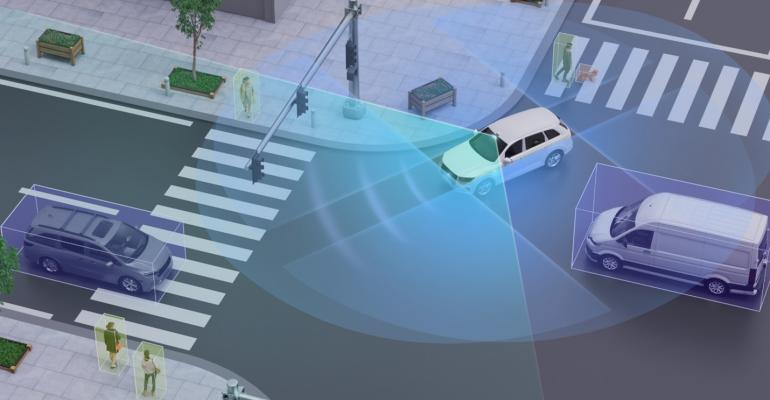News

Opinion: The driver is still key to road safety | Day 4
As vehicles incorporate more advanced driver assistance systems (ADAS), we must educate drivers about how these technologies work, their purpose, limitations and outcomes. Without a sound understanding of the way in which these technologies work, and why they are important, we will not see the potential road safety benefits.

Today’s letters: Ottawa road safety — slower is not always better
This story was disappointing, as I have come to rely on the Citizen to be first to shout that the emperor has no clothes. Instead, you have followed the mania that chants slower speeds mean more safety, even if it means distracting the drivers.

RCMP, ICBC remind drivers and pedestrians to pay attention
Surrey RCMP and the Insurance Incorporation of British Columbia are reminding drivers — and pedestrians — of the importance of paying attention on the road.
With several collisions that have injured or killed pedestrians in Surrey and its neighboring municipalities in recent weeks, both RCMP and ICBC noted pedestrian crashes typically increase at this time of year.

B.C. is updating the law to better protect vulnerable road users
The province announced Thursday that it is updating its law to enhance safety for vulnerable road users. The Motor Vehicle Act will be amended to introduce new safe passing-distance rules for drivers.
“These new regulations will keep people safer on our roads and encourage even more use of active transportation,” said Rob Fleming, minister of Transportation and Infrastructure.

Wireless charging: The roads where electric vehicles never need to plug in
The first wireless electric road in the US has been installed in Detroit, allowing electric vehicles to charge up as they drive along. But at nearly $2m (£1.6m) per mile, is this really the future of transport?
It looks like any other stretch of asphalt in cities across the US. But drive down 14th Street in Detroit, Michigan in the right vehicle, and something strange happens. This is the first public place in the US where you can drive an electric vehicle and it doesn’t drain the battery – it charges it.

Ontario sees rise in accident rates among new drivers following changes to G driving test
New research has shown a notable increase in accidents among novice drivers following Ontario’s overhaul of its G road test in 2022.
Insurance comparison website MyChoice found that the percentage of novice drivers involved in accidents increased from 9.59% to 10.34% after the test was changed, marking a 7.82% overall increase.
This was drawn from a study of 4,800 Ontario G-licensed drivers with at least one year of driving experience. One group of drivers was licensed in 2022, while the other group of drivers received their license in 2021.

The tech-driven roads of tomorrow: Advancing safety, efficiency and sustainability in the road ecosystem
“The impact of AV technology on road safety is truly exciting, bringing both remarkable advancements and important challenges to address,” says Gonzalo Alcaraz, Deputy Director General of the International Road Federation, as he shares his thoughts on how new technologies are impacting the road ecosystem, with a particular focus on autonomous vehicles.

Rapid Lidar Adoption Increasing Road Safety for All
Over the last few years, Advanced Driver Assistance Systems (ADAS) have seen incredible adoption as mounting evidence shows it provides significant improvements in road safety. At the end of 2020, 10% of vehicles in use worldwide were equipped with ADAS, and it is projected that over half of all vehicles will have ADAS safety features by 2050.

7 Tips for driving an EV in Canadian winter weather
Canadian EV drivers are subject to varying road and weather conditions, including good ol’ winter that brings about wind, rain and snow, sometimes all at the same time. There are a few things you should be watching for when driving in winter conditions and to help give the rundown of what you can expect, we used the 2023 Genesis GV60 (recently reviewed for Driving’s David Booth’s Range Finder column) — though it’s important to note that EVs can vary in size, shape and capability.

Five life-saving car safety tips drivers should follow as road conditions worsen and temperatures plunge
Before driving in the winter weather, drivers should check the voltage on their batteries. The car may not start up if the battery does not have enough juice. Air pressure within a tire is susceptible to changing temperatures. If the climate is inclement, air pressure tends to lessen. A tire with low pressure comes with visual cues that are easy to detect. The radiator is essential for keeping the car warm in cold weather. Car experts at Kelly Blue Book suggest flushing the coolant every 30,000 or two years.

ICBC Gives Safety Tips For People this Halloween
This Halloween, it’s important for drivers, parents and kids to take precautions to keep everyone safe. In a release from ICBC, they say there were 640 crashes resulting in 240 injuries on Halloween in B.C. last year.
In the Southern Interior, which includes the Cariboo, an average of 29 people are injured in 110 crashes on Halloween. Tips for drivers when they’re on the road this Halloween include watching your speed, scan the road, be patient, and to be prepared. Kids won’t be focused on road safety, which is why it’s important to to keep your eyes peeled for anyone running on the road.

ICBC warns drivers to prepare for heavy rain and flooding
In light of the atmospheric rivers unloading heavy rain over British Columbia this week, the Insurance Corporation of British Columbia (ICBC) has issued an advisory for drivers in the province to be careful when on the road. According to the insurer, crashes due to driving too fast for the current weather conditions in BC increase by 90% when comparing October (461, on average) to December (243, on average) each year. ICBC cited provincial police data on a five-year average from 2016 to 2020 for this crash information.

The Importance of Defensive Driving
Awareness is key to defensive driving, ensuring you are aware of potential hazards and other road users’ actions around you, enabling you to take pro-active action to avoid an incident. To enable you to anticipate hazards, look 15 seconds ahead, giving yourself time to react. Aim to always scan your mirrors and look beyond the vehicle in front as this will help you to be aware of possible hazards before it is too late.

4 Driving safety tips
When you’re behind the wheel of a car – whether alone or with passengers – driving safely should always be your top concern. We’re more distracted than ever, so it’s crucial to know the basics of safe driving and practice them every time you’re on the road in order to drive responsibly. Here are some safe driving tips.

As fatalities rise, program aims to teach teens defensive driving to save lives
With prom season now in full swing and summer around the corner, experts like Highway Patrol trooper and defensive driving instructor Michael Baker said it’s a crucial time to make sure teens are prepared for the dangers they face behind the wheel.

Experts offer several safe driving tips
Driving can potentially be the most dangerous part of your work day. That is why it is so important to minimize distractions and drive safely to protect yourself and others on the roadways.

Want your driver’s licence? You’ll need to be vaxxed or show proof of a negative COVID-19 test
SGI’s COVID-19 policy to make road tests safer comes into effect Oct. 25.

Mandatory training will improve safety for commercial drivers
Safer, more skilled commercial drivers will be travelling B.C. roads with the implementation of mandatory entry-level training (MELT) for new Class 1 commercial driver’s licence applicants.

High demand for ICBC road tests, driving lessons lead to long waits to get behind the wheel
Wannabe drivers are facing month-long waits to get tested for a licence.
